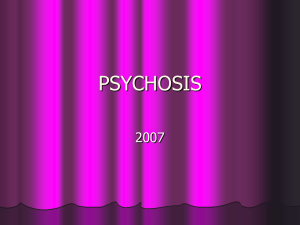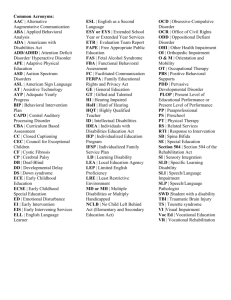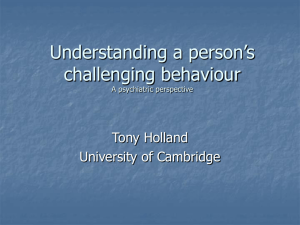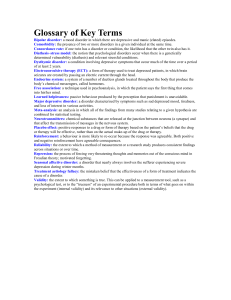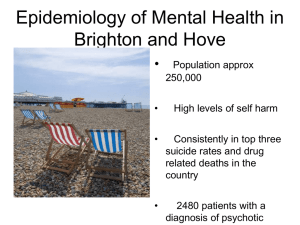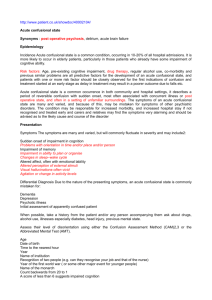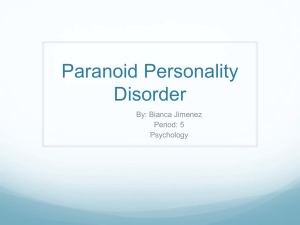PS 2001-02 Depressive Disorder w. Pyschotic Features
advertisement
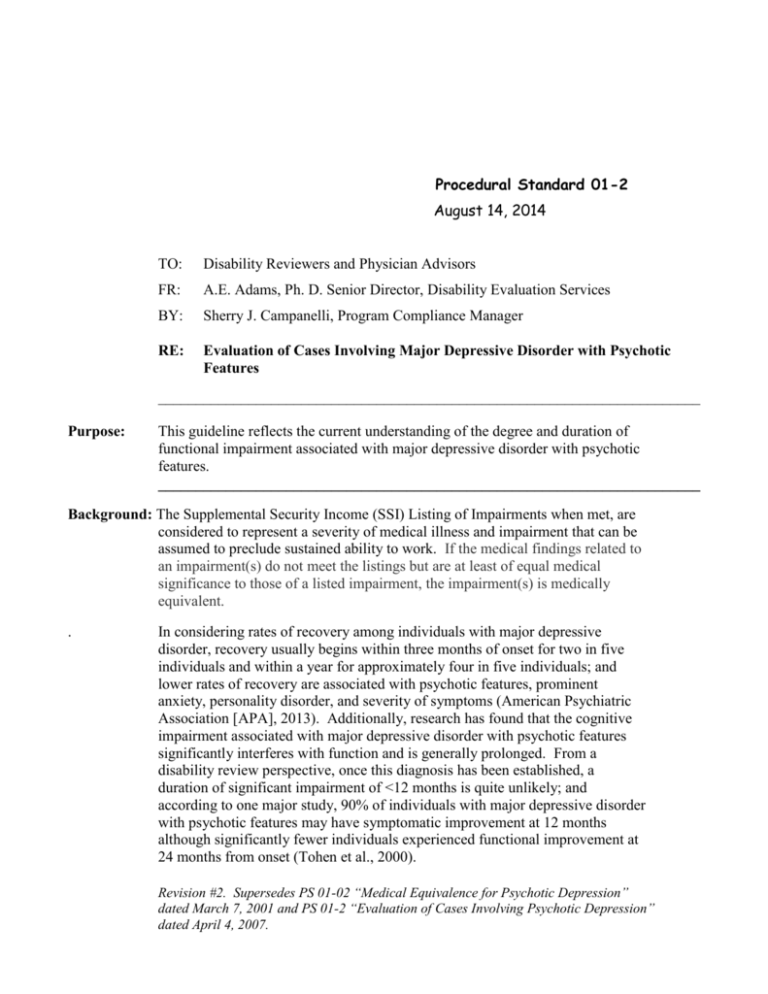
Procedural Standard 01-2 August 14, 2014 TO: Disability Reviewers and Physician Advisors FR: A.E. Adams, Ph. D. Senior Director, Disability Evaluation Services BY: Sherry J. Campanelli, Program Compliance Manager RE: Evaluation of Cases Involving Major Depressive Disorder with Psychotic Features ________________________________________________________________________ Purpose: This guideline reflects the current understanding of the degree and duration of functional impairment associated with major depressive disorder with psychotic features. ________________________________________________________________________ Background: The Supplemental Security Income (SSI) Listing of Impairments when met, are considered to represent a severity of medical illness and impairment that can be assumed to preclude sustained ability to work. If the medical findings related to an impairment(s) do not meet the listings but are at least of equal medical significance to those of a listed impairment, the impairment(s) is medically equivalent. . In considering rates of recovery among individuals with major depressive disorder, recovery usually begins within three months of onset for two in five individuals and within a year for approximately four in five individuals; and lower rates of recovery are associated with psychotic features, prominent anxiety, personality disorder, and severity of symptoms (American Psychiatric Association [APA], 2013). Additionally, research has found that the cognitive impairment associated with major depressive disorder with psychotic features significantly interferes with function and is generally prolonged. From a disability review perspective, once this diagnosis has been established, a duration of significant impairment of <12 months is quite unlikely; and according to one major study, 90% of individuals with major depressive disorder with psychotic features may have symptomatic improvement at 12 months although significantly fewer individuals experienced functional improvement at 24 months from onset (Tohen et al., 2000). Revision #2. Supersedes PS 01-02 “Medical Equivalence for Psychotic Depression” dated March 7, 2001 and PS 01-2 “Evaluation of Cases Involving Psychotic Depression” dated April 4, 2007. As a practical matter, situations occur when the medical evidence clearly and convincingly establishes the presence of major depressive disorder with psychotic features including hallucinations or delusions; however, as noted in the research, while symptomatic recovery can occur relatively quickly with treatment, functional recovery typically occurs much later if at all. In such cases, in the absence of compelling information to establish a higher level of functioning, objectively documented major depressive disorder with psychotic features is found to be equivalent in impairment severity to that described in the SSI Listing of Impairments. Clinical Considerations: In considering the clinical information, it is important that Disability Reviewers be familiar with key features of psychotic symptoms, especially hallucinations and delusions (APA, 2013, pp. 87-88). Additionally, it is important to recognize when specific perceptual disturbances may not be considered to be psychotic. For example: It is necessary that the evaluation of psychosis include knowledge and sensitivity to cultural factors in considering diagnosis. For example, ideas that may appear delusional in one culture may be common in another and visual or auditory hallucinations with a religious content may be a normal part of a religious experience. In another example, there is evidence that Latinos frequently endorse psychotic symptoms associated with impairment, e.g.-seeing shadows, hearing voices of deceased family members, yet do not meet criteria for psychotic disorder; however, such endorsement of symptoms is typically associated with suicidal ideation, mental health related disability, psychiatric vulnerability, and mental health service utilization (Lewis-Fernandez et al., 2009). Hallucinations must be experienced with a clear sensorium, i.e., hallucinations that occur while falling asleep (hypnagogic) or when waking up (hypnopompic) are considered to be in the range of normal experience (APA, 2013, p. 88). Hallucinations may occur as a direct result of substance use or during withdrawal from drugs such as alcohol; however, these symptoms typically resolve following withdrawal. Symptoms of post-traumatic stress disorder may include dissociation, depersonalization, derealization, and hearing the voice of a perpertrator. These symptoms, albeit serious, are not considered to be psychotic. Revision #2. Supersedes PS 01-02 “Medical Equivalence for Psychotic Depression” dated March 7, 2001 and PS 01-2 “Evaluation of Cases Involving Psychotic Depression” dated April 4, 2007. Procedure: Those individuals for whom there is medical evidence of major depressive disorder with psychotic features and do not meet a listing are considered to equal “12.04” even if the psychotic symptoms have responded to treatment unless there is compelling evidence of a non-disabling level of mental function and sustained remission from depressive symptoms. This assessment warrants careful review of available information, including treating source reports. Consultation with a Physician Advisor may be helpful in determining the applicability of this standard. A disability review date is established consistent with a time when there is anticipated to be both symptomatic and functional improvement such that the client no longer meets the definition of disability. ________________________________________________________________________ Summary: Individuals with documented major depressive disorder with psychotic features are found to be medically equivalent even if those symptoms have improved with treatment unless there is compelling evidence of a non-disabling level of mental function. References: American Psychiatric Association. (2013). Diagnostic and statistical manual of mental disorders (5th ed.). Washington, D.C.: Author. Lewis-Fernandez, R., Horvitz-Lennon, M., Blanco, C., Garnaccia, P.J., Cao, Z., & Alegria, M. (2009). Significance of endorsement of psychotic symptoms by US Latinos. Journal of Mental Disorders, 197(5), 337-347. Tohen, M. et al. (2000). Two-year syndromal and functional recovery in 219 cases of first episode major affective disorder with psychotic features. American Journal of Psychiatry, 157(2), 220-228. Revision #2. Supersedes PS 01-02 “Medical Equivalence for Psychotic Depression” dated March 7, 2001 and PS 01-2 “Evaluation of Cases Involving Psychotic Depression” dated April 4, 2007.

